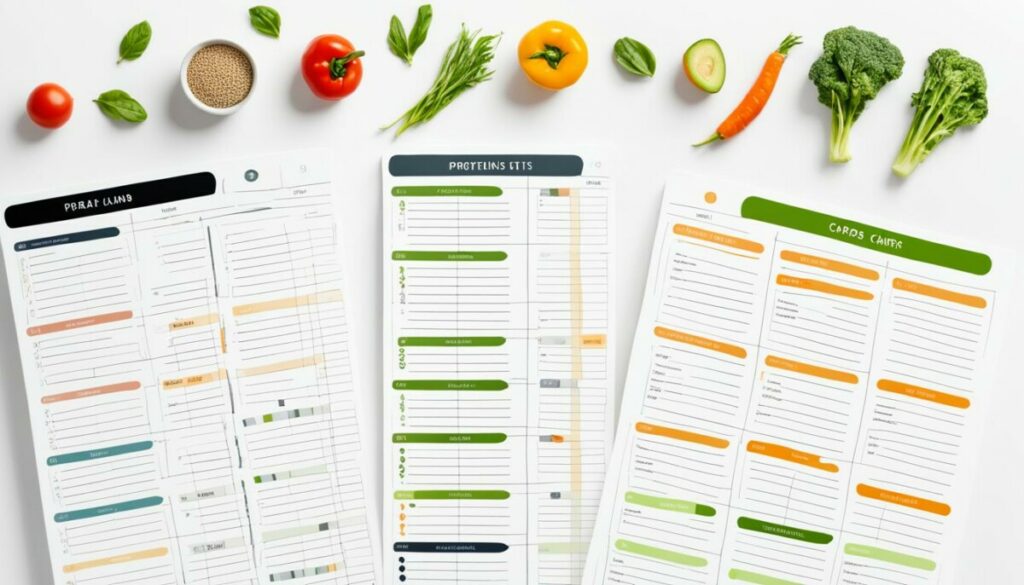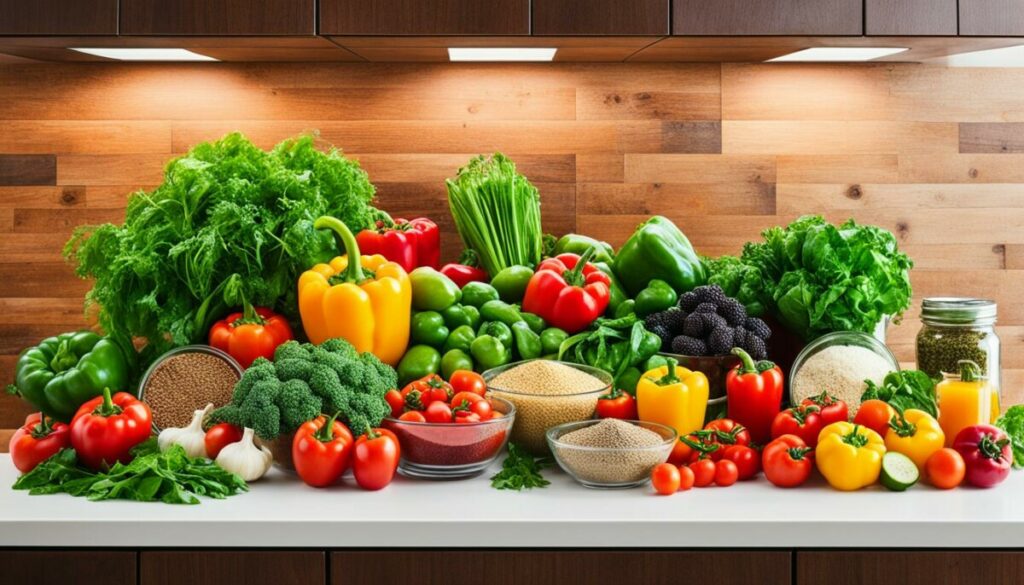Disclosure: This post may contain affiliate links, meaning if you decide to purchase via my links, I may receive a commission for purchases made through links at no additional cost to you. See my disclosure for more information.
1. Introduction
Sometimes, it feels like individual actions are just a drop in the ocean, but trust me, when we all chip in, especially through practices like zero-waste cooking, it can lead to a massive environmental wave. Every choice I make, from buying only what I need to learning new preservation methods, plays a part in this larger eco-friendly movement. By opting for energy-efficient appliances and choosing foods that are gentle on our planet, I’m not only engaging in zero-waste cooking but also significantly reducing my own carbon footprint.
Whenever I head to the market, my goal is clear: pick the sustainable options. That slightly wonky carrot or the not-so-round apple? They’re my top picks! Choosing these imperfect items helps cut down on food waste and gives a thumbs up to the hardworking farmers.
My journey into zero-waste cooking really is shaping the future of food, one bite at a time. This isn’t just a fleeting trend; it’s a full-blown, eco-friendly revolution that I’m thrilled to be part of. It’s more than just cooking—this is about transforming how I choose, prepare, and enjoy food. Every little step I take is a part of a much bigger, greener picture.
Creating meals that use every single part of the food—from the pantry right to the table—is genuinely inspiring. Along this journey, I’ve sprinkled plenty of sustainable cooking tips that make eco-friendly meal prep a joy. Adopting these earth-friendly cooking habits means I’m doing my part to lessen my carbon footprint, all while keeping my taste buds happy. Whether it’s cooking with purpose or finding smart ways to use leftovers, come along as I dive into the many benefits of this green movement. Who knows, you might start seeing your kitchen in a new light too!
1.1. Key Insights from My Zero-Waste Cooking Adventure
- Zero-Waste Cooking: A Cornerstone of Eco-Friendly Living
- Green Cooking Tips to Reduce Kitchen Waste
- Mindful Meal Planning with Sustainable Cooking Practices
- The Significant Eco-Impact of Environmentally-Friendly Cooking
- Appreciating Every Ingredient with Sustainable Cooking Methods
Diving into zero-waste cooking has completely changed my relationship with food. Every meal is an opportunity to value our resources and reduce our ecological footprint. Let me walk you through the principles and techniques that make a kitchen sustainable and contribute to a healthier planet.
2. The Philosophy of Zero-Waste Cooking and Its Environmental Impact
Embarking on a zero-waste cooking journey profoundly transforms our relationship with food. Rather than a simple act of sustenance, each meal becomes an opportunity to cherish resources and minimize our ecological footprint. Let me share with you the principles and practices that support a sustainable kitchen and how they contribute to a healthier planet.
2.1. Understanding Zero-Waste Cooking
Zero-waste cooking might sound daunting, but it’s really about making simple, intentional changes to our shopping, cooking, and eating habits. It’s a mindset where I strive to use every part of the food, turning roots, stems, leaves, and even bones into delightful meal components. This way, I honor both the produce and the effort that brought it to my plate.
2.2. How Zero-Waste Cooking Tackles Climate Change
Committing to zero-waste cooking means I’m addressing the pressing issue of climate change head-on. Did you know that food waste is a quiet but significant contributor to global greenhouse gas emissions? It ends up decomposing in landfills, releasing methane, a highly potent pollutant. By integrating sustainable practices in my kitchen, I’m helping to reduce these emissions and restore environmental balance.
2.3. Zero-Waste Cooking’s Role in Carbon Reduction
Every small step I take in zero-waste cooking is a leap towards a sustainable future. The impact of food waste on our planet is too significant to overlook in this culinary revolution. Here’s how I make a difference:
- Using the whole vegetable or animal in recipes
- Composting inedible scraps instead of trashing them
- Cutting down on single-use plastics by opting for reusable containers
- Properly storing food to extend its shelf life
- Supporting local farmers to reduce transportation emissions
- Staying updated on new zero-waste technologies
With these steadfast commitments, I’m confident that my kitchen practices are making a positive impact, inspiring others, and allowing me to enjoy the tasty rewards of a zero-waste lifestyle.
3. First Steps to a Sustainable Kitchen: Planning and Shopping Smart
My journey towards a more sustainable kitchen began with thoughtful meal planning and wise shopping. Initially, by evaluating what I already had at home and crafting a meal plan around it, I’ve drastically cut back on unnecessary trips to the store and, consequently, reduced food waste. Furthermore, incorporating low-waste recipes has not only enriched my culinary adventures but also bolstered my eco-friendly mission.
Subsequently, developing eco-friendly shopping habits was a natural progression. Specifically, understanding which foods spoil the quickest and purchasing just enough can significantly diminish the guilt associated with throwing away uncooked food. Additionally, opting for minimal or unpackaged products whenever feasible has an extensive environmental impact over time, enhancing my efforts in promoting sustainability.
| Shopping Habit | Eco-Friendly Impact |
|---|---|
| Check pantry before shopping | Avoids overstocking and waste |
| Plan meals for the week | Ensures only necessary items are purchased |
| Buy loose fruits and vegetables | Reduces packaging waste |
| Prioritize perishable goods | Decreases the chance of spoilage |
| Opt for seasonal products | Supports local growers and reduces carbon footprint |

By staying informed about local and seasonal products, I not only eat healthier but also make a sustainable impact on the environment. Every item on my shopping list is chosen carefully, serving either my well-being or the planet’s.
Every item on my shopping list serves a purpose, either for my well-being or for the well-being of the planet.
Through mindful assessment, creative adaptation of low-waste recipes, and smart shopping practices, my kitchen has become a testament to a global need for change—one delicious, eco-conscious meal at a time.
4. Choosing Eco-Friendly Ingredients
When I’m out shopping, embracing imperfect produce is my first step towards sustainability. Those quirky-looking veggies and fruits aren’t just good for the planet—they’re also a treat for the table. By celebrating beauty in all shapes and sizes, I’m taking a stand against food waste and unnecessary packaging.
5. Shopping in Bulk with Reusable Containers
I’ve fully embraced shopping in bulk to deepen my commitment to sustainability. It’s not just about the cost savings—it’s about reducing my ecological footprint as well. Armed with reusable containers, I scoop just what I need from bulk bins, bypassing unnecessary packaging and significantly cutting down waste.
5.1. Sourcing Ingredients Locally and Seasonally
My culinary adventures often lead me to local farmers’ markets, where I explore a rich array of fresh, seasonal ingredients. Choosing local isn’t just a feast for the senses—it’s a powerful way to reduce the carbon footprint associated with long transport distances. Engaging with the seasonal offerings of nature doesn’t just spice up my menu; it strengthens the bond between us, our food, and our community.

Joining the local seasonal dance of nature not only brings variety to our plates but also forges a deeper connection between us, our food, and the community that grows it.
- Choosing ugly produce: did you know that one-third of the food produced globally is never consumed? By embracing imperfect produce, we assert the value of food over vanity, making a direct impact on this statistic.
- Bulk buying can be a joyful treasure hunt, discovering new grains, spices, and nuts, all without the added burden of wasteful containers.
- Local and seasonal shopping has converted my kitchen into a map of the area’s agricultural calendar, with each dish telling the story of the season and land.
As I continue my journey towards a sustainable lifestyle, these practices not only shape my relationship with food but also embody a larger movement towards the planet’s wellbeing. It’s a choice that enriches my life with fresh tastes and a clear conscience—and that’s worth every effort.
| Benefit | Imperfect Produce | Bulk Shopping | Local & Seasonal |
|---|---|---|---|
| Waste Reduction | Reduces food waste by using non-standard items | Minimizes packaging waste | Reduces transport emissions |
| Economic Value | Supports local farmers | Cost-effective purchases | Stimulates local economy |
| Food Quality | Enhances nutrient retention | Maintains freshness in storage | Ensures peak flavor and nutrition |
6. Embracing the Zero-Waste Cooking Lifestyle
Embarking on a zero-waste cooking journey has not only been an enriching culinary adventure but also a significant eco-friendly shift in my lifestyle. By integrating mindful practices and sustainable cooking tips, every small step I take leads to the creation of waste-free meals, thereby making a profound impact on our environment.
6.1. Holistic Practices: Root to Stem, and Nose to Tail
In exploring zero-waste cooking, I’ve adopted root-to-stem and nose-to-tail techniques, which have revolutionized how I use ingredients. This approach reduces waste and unlocks new, exciting flavors and textures by utilizing parts of produce that are typically discarded. Imagine utilizing the entire herb, from leaf to stem, to enhance flavor and reduce waste—it’s transformative.
6.2. Creative Leftover Transformation
Transforming leftovers has become a cornerstone of my zero-waste strategy. By repurposing yesterday’s meals into new, enticing dishes like hearty soups and vibrant frittatas, I align perfectly with my zero-waste goals. This practice not only minimizes food waste but also injects creativity and variety into every meal.
6.3. Valuing Every Peel, Seed and Stem
My zero-waste journey has taught me to find value in peels, seeds, and stems—elements of food often overlooked. From roasting squash seeds for a crunchy treat to making chips from potato peels, these practices enrich my cooking and deepen my connection with food. Each meal becomes an opportunity to minimize waste and contribute positively to environmental health.







Add your first comment to this post